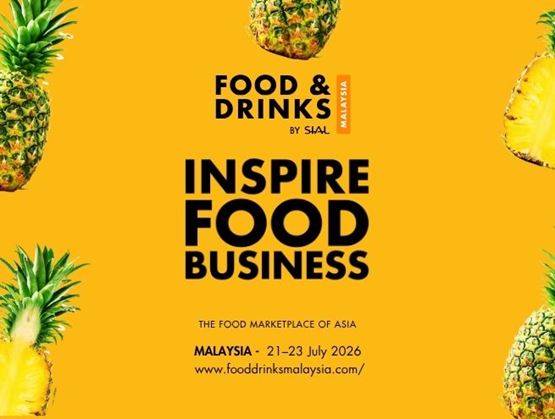These four figures alone explain why many suppliers now treat Kuala Lumpur as their gateway to Southeast Asia’s F&B market. For exporters testing product-market fit, the show’s structure does more than aggregate footfall: it concentrates relevant demand. The Top Buyer Programme and The SIAL Society created curated encounters that shortened sales cycles and brought decision-makers to stands with intent. Exhibitor testimonials repeatedly referenced quality meetings with distributors and retail groups: evidence that the event functions as a working marketplace rather than a brand-only showcase.
Premium additions: storytelling zones that convert
Two curated zones stood out as growth engines. The Chocolate Show debuted as a specialist stage for premium, artisanal and specialty chocolate, from live demos to tastings and brand narratives designed for retail buyers and gourmet importers. Backed by the Malaysia Cocoa Board, the segment underlined Malaysia’s cocoa credentials while giving international chocolatiers a focused path to regional buyers.
Beverage Non-Halal made a strategic entrance, answering rising demand from HORECA and premium retail. Exclusively represented by Guizhou at FDM2025, the zone offered a dedicated trade-only platform for Moutai, wines, spirits, liquors and craft brews, enabling targeted networking with importers, distributors and hospitality buyers, particularly relevant to tourism and premium dining segments.
For suppliers, both zones did more than “add content”; they filtered audiences. Chocolate brands met niche buyers disposed to premium positioning; beverage producers accessed channels aligned with margin-rich consumption occasions.
International pavilions: why geographic clustering matters
Pavilions from China, Thailand, South Korea, USA, Poland and Türkiye shaped the show floor and, crucially, buyer navigation. For time-pressed visitors, national clusters remain an efficient way to benchmark offers and negotiate with multiple brands. For governments and trade promotion agencies, pavilions continue to de-risk market entry for SMEs by pooling visibility and services.
In practice, this translated into steady lead flow for first-time exhibitors. As U.S. confectioner Original Gourmet noted, the show offered access to distributors and importers across East Asia; Turkish dairy player Rella Gıda saw “great market potential” for its frozen mozzarella, rating its participation a strong 4/5; and Malaysian manufacturers, from Tatawa Industries to Verify Halal, highlighted high-value conversations and cross-border collaboration opportunities.
Demand signals: where Food & Drinks Malaysia visitors spent their time
A quick read of buyer interest points to near-term growth categories. Halal led the list of products sought after by visitors. This was followed by Drinks, tea and coffee and grocery items. Natural/organic food & beverages were also a highlight for visitors.
For brands planning lineups and sampling, this suggests prioritising compliant Halal SKUs, ready-to-drink innovations, and pantry staples with an upgraded value offering (clean labels, functional benefits, sustainable sourcing).
In terms of visitors to Food & Drinks Malaysia, manufacturers accounted for 17.12%, with wholesalers/distributors/agents/dealers at 14.15%, complemented by F&B management and consultancy cohorts. This mix tilts the event toward practical buying and private-label conversations as much as brand-building.

The Food & Drinks Malaysia advantage for ASEAN market access
Numbers matter, but Food & Drinks Malaysia pairs scale with intent. From structured buyer programmes to expert-led content, the show earned feedback such as “The exhibition is a great opportunity to find new clients and grow our business” (Roma Group, Saudi Arabia) and “good exposure to be in the market” (Bennsethicoa, Malaysia). That blend of discovery and dealmaking is why many exhibitors have already flagged a return.
Category depth that mirrors regional consumption
The balance between Halal, premium indulgence (chocolate), non-Halal on-trade (beverages), and better-for-you (natural/organic) maps neatly to Southeast Asia’s multi-channel consumption. Suppliers can test adjacent categories, e.g., a chocolate maker piloting a vegan line, or a coffee roaster trialling RTD SKUs; against live buyer feedback in one venue.
Food & Drinks Malaysia 2025 confirmed Kuala Lumpur’s status as both a meeting place and a launchpad for Southeast Asia. With buyer-led programmes, curated zones, and national pavilions accelerating real market entry, the show has become a practical tool for suppliers seeking ASEAN growth.

